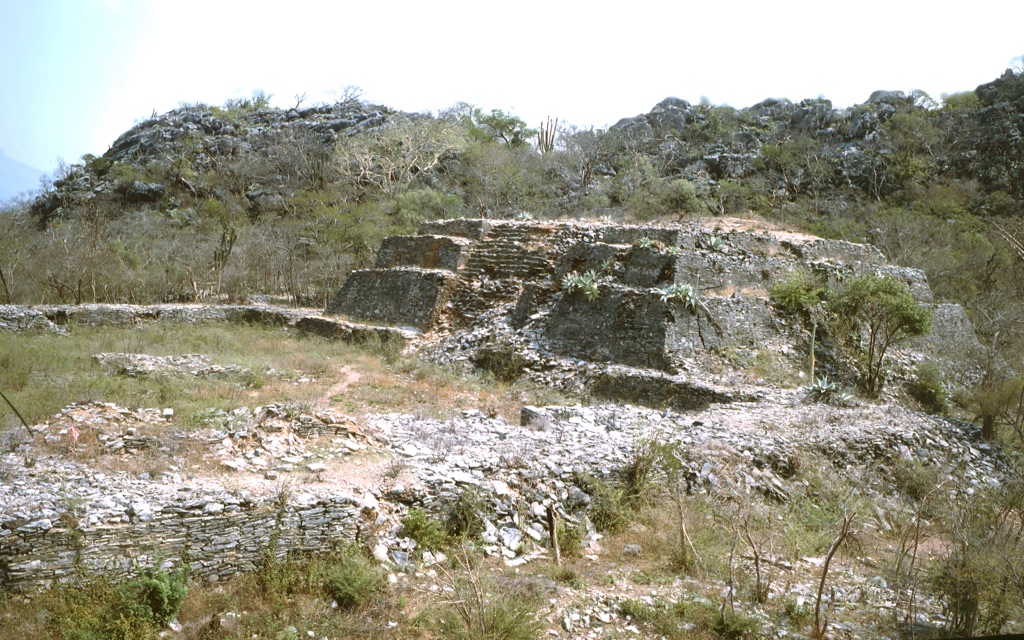Guiengola is a significant archaeological site located in the Mexican state of Oaxaca. It was a pre-Columbian Zapotec fortified city, known for its unique hilltop location and strategic defensive attributes. The site offers a glimpse into the Zapotec civilization and their architectural prowess. Guiengola is less known compared to other Mesoamerican ruins, yet it provides valuable insights into the region’s history and culture.
Get your dose of History via Email
Historical Background of Guiengola
Guiengola’s discovery by the modern world dates back to the late 19th century. It was first documented by Mexican scholar Francisco Belmar in 1902. The site’s origins trace back to the Zapotec people, who built it. They were a pre-Columbian civilization known for their language, art, and architecture. Guiengola served as a strategic stronghold during the Zapotec’s zenith.
The city’s construction likely occurred during the Late Classic period of Mesoamerican chronology. It became a prominent center under the rule of the Zapotec king, Cosijoeza, in the late 15th century. The site’s fortifications were crucial during conflicts with the Mixtecs and later the Aztecs. Guiengola’s strategic position on a hill made it nearly impregnable.
After the Spanish conquest, Guiengola fell into disuse and was eventually abandoned. Over time, it became overgrown with vegetation, hiding its structures. Despite its historical significance, it has not been as extensively excavated or restored as other Zapotec sites like Monte Albán. However, it remains an important piece of the Zapotec legacy.
Guiengola’s later history is less documented, but it’s known that the site was not continuously inhabited after the Spanish conquest. It stands today as a testament to the Zapotec civilization’s strength and ingenuity. The site has not been the scene of any major historical events in recent history but remains a point of interest for archaeologists and historians.
The site’s discovery and subsequent studies have shed light on the Zapotec civilization and their way of life. Guiengola’s remote location and lack of extensive modern excavation have kept it relatively undisturbed, preserving its authenticity. It offers a unique opportunity to study pre-Columbian fortifications and urban planning.
About Guiengola
Guiengola is nestled atop a large hill, surrounded by a landscape of cacti and thorny scrub. The site’s natural defenses are complemented by man-made fortifications. These include walls and terraces carved out of the hill’s rock. The Zapotecs utilized the local resources, such as stone, to construct their city.
The central area of Guiengola features a grand plaza, which was likely used for ceremonies and public gatherings. Surrounding the plaza are the remains of various structures, including palaces, temples, and common houses. The architectural highlights include the intricate stonework and the strategic layout of the buildings.
One of the most notable structures is the palace complex, which showcases the sophistication of Zapotec architecture. The complex includes several rooms, some with remnants of decorative motifs. The use of columns and open spaces indicates an advanced understanding of both aesthetics and functionality.
The site also contains a ball court, which is a characteristic feature of Mesoamerican cities. The ball court at Guiengola is unique due to its irregular shape, which has intrigued researchers. It suggests adaptations to the local topography or possibly a different game variant.
Despite its historical significance, Guiengola has not undergone extensive restoration. This has preserved the site’s authenticity but also means that many of its secrets remain buried. The structures that are visible today offer a tantalizing glimpse into the past, but much of Guiengola’s story is yet to be uncovered.
Theories and Interpretations
Several theories exist about Guiengola’s purpose and significance. Some suggest it was primarily a military fortress, given its strategic location and fortifications. Others believe it was a ceremonial center, as indicated by the grand plaza and temples.
The mysteries of Guiengola include the irregularly shaped ball court. Researchers have speculated that it may have had a specific ceremonial or social function. The lack of extensive excavation means that interpretations often rely on comparisons with other Zapotec sites.
Historians have matched some of Guiengola’s features to historical records of the Zapotec civilization. These records help to piece together the site’s role in the broader context of Mesoamerican history. However, the absence of written records from the Zapotecs themselves leaves room for interpretation.
Dating of the site has been carried out using methods such as stratigraphy and ceramic analysis. These techniques have helped establish a timeline for Guiengola’s occupation and development. Yet, the exact dates of many structures remain uncertain.
The interpretations of Guiengola are continually evolving as new discoveries are made. Each finding adds a piece to the puzzle, contributing to our understanding of this enigmatic site. The ongoing research at Guiengola promises to reveal more about the Zapotec civilization and their remarkable achievements.
At a glance
Country; Mexico
Civilization; Zapotec
Age; Late Classic period, approximately 500 – 750 AD
Conclusion and Sources
The information in this article has been obtained from the following reputable sources;

